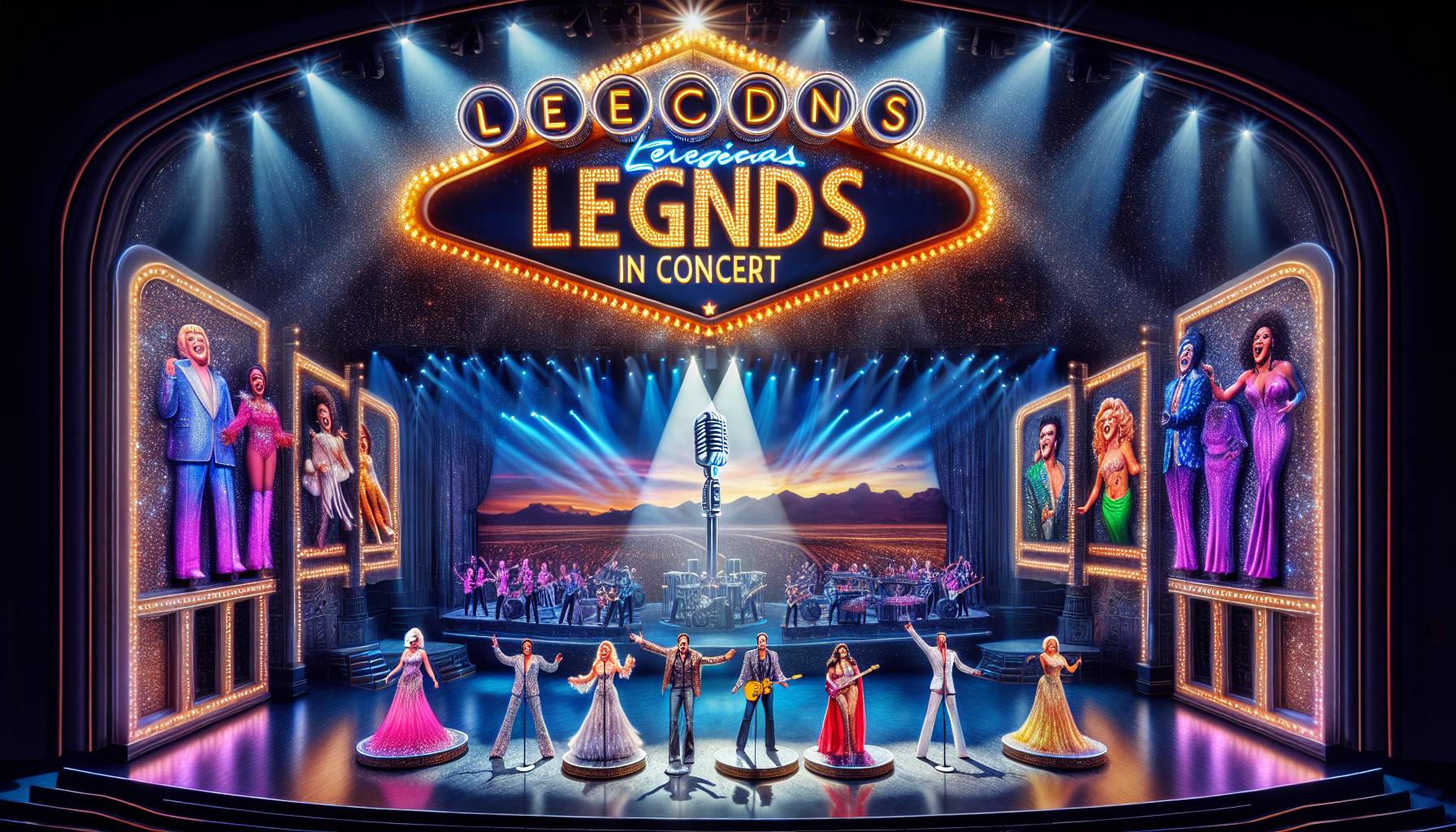
Consumer preferences transform Vegas entertainment
Las Vegas is experiencing a monumental change in its entertainment scene, spurred by shifting consumer tastes that prioritize impactful, well-known performances over conventional formats. The Strip, which was once famous for showgirl revues, impersonation shows, and magic performances, is now shifting towards major residencies and large-scale events that attract worldwide attention. This change is more than just surface-level—it signifies a fundamental shift in what audiences seek: exclusivity, star power, and immersive experiences.
Iconic shows that once epitomized the Vegas experience are swiftly fading away. Established productions like Legends in Concert have closed, and magic—historically a staple of the Strip—has declined significantly. Although acts like Criss Angel continue to draw in audiences, the genre lacks the cultural significance it once had. Impersonators and ventriloquists, previously pillars of the Vegas scene, are finding it increasingly difficult to compete with the influx of high-profile talent and lavish residencies.
Consequently, Las Vegas has positioned itself as a worldwide entertainment hub, showcasing major events such as the Super Bowl, Wrestlemania, and concerts by international superstars like Taylor Swift and BTS. These events not only generate substantial visitor numbers but also transform the entertainment value of the Strip. Expectations have been raised, leaving mid-tier or niche productions struggling to keep up.
For Australian investors and entertainment operators, this shift sends a distinct signal: consumer enthusiasm is shifting away from legacy formats and toward experiences that are both culturally relevant and globally scalable. The repercussions are significant for venues like The Star in Sydney or Crown Casino in Melbourne, which may need to reevaluate their entertainment strategies to stay competitive in an ever-changing market.
Even high-budget productions are not shielded from the challenges of this new reality. The cancellation of shows like the Meat Loaf-inspired Bat Out of Hell and Lin-Manuel Miranda’s production, as well as the conclusion of Cirque du Soleil’s Beatles: Love following The Mirage’s closure, highlights the precariousness of the current entertainment landscape. These incidents underscore the risks involved in investing in secondary productions, especially in markets where consumer expectations are being redefined by global trends.
Australian investors should be aware: the Las Vegas model increasingly centers on headline attractions and comprehensive entertainment experiences that merge music, sports, and technology. As consumer preferences continue to change, the capacity to adapt swiftly and invest wisely in high-impact offerings will be essential for long-term success in the entertainment industry.
Insights for Australian entertainment investors
For Australian entertainment investors, the transformation in Las Vegas acts as a strategic guide for maneuvering through a swiftly changing global entertainment economy. The transition away from traditional, mid-tier shows towards high-profile residencies and engaging, tech-driven experiences is not simply a fad—it represents a fundamental reorientation of consumer expectations. This shift presents both challenges and opportunities for Australian venues and operators aiming to secure their future.
Establishments like The Star in Sydney and Crown Melbourne must now evaluate whether their current entertainment offerings meet the new global standards. The success of residencies featuring artists like Adele and Bruno Mars in Las Vegas illustrates the commercial potential of investing in world-renowned talent. Although the initial costs of booking these performers can be high, the long-term benefits—reflected in ticket sales, increased visitor numbers, and enhanced brand recognition—can be significant.
Australian investors should also investigate how venue innovation can enhance audience engagement. The Las Vegas Sphere, with its state-of-the-art audiovisual features and immersive design, has transformed the live performance experience. While such infrastructure investments may seem ambitious, they indicate a consumer demand shift towards experiences that are not only entertaining but also technologically sophisticated and shareable on social media. For Australian developers and entertainment hubs, this could mean reimagining venue layouts to support multi-sensory, large-scale productions that resonate with a global audience.
Additionally, the fusion of sports and music into a cohesive entertainment ecosystem serves as a model worth emulating. Las Vegas’s capacity to host events like the Super Bowl and Wrestlemania alongside significant music residencies has fostered a diversified revenue flow and broadened its appeal across various demographics. Australian operators could explore similar partnerships—utilizing major sporting events like the AFL Grand Final or the Australian Open as focal points for entertainment programming that encompasses concerts, festivals, and immersive experiences.
From a capital allocation standpoint, the primary message is clear: legacy formats are no longer a reliable investment. Investors should emphasize agility, scalability, and cultural relevance when assessing entertainment assets. This may necessitate redirecting funds away from traditional review-style shows and towards collaborations with global talent agencies, technology-driven production companies, and sports-entertainment hybrids.
In practical terms, this might involve forming partnerships with international promoters, investing in digital ticketing and audience analytics technologies, or even acquiring minority shares in production firms that specialize in immersive experiences. The objective is to cultivate a portfolio that is not only adaptive to shifting preferences but also primed to excel in an increasingly experience-driven market.
Ultimately, the Las Vegas case study highlights the necessity of strategic foresight and bold investment. For Australian financiers and entertainment stakeholders, the message is unmistakable: adapt to the new entertainment landscape or face obsolescence in a market that rewards innovation while punishing stagnation.

